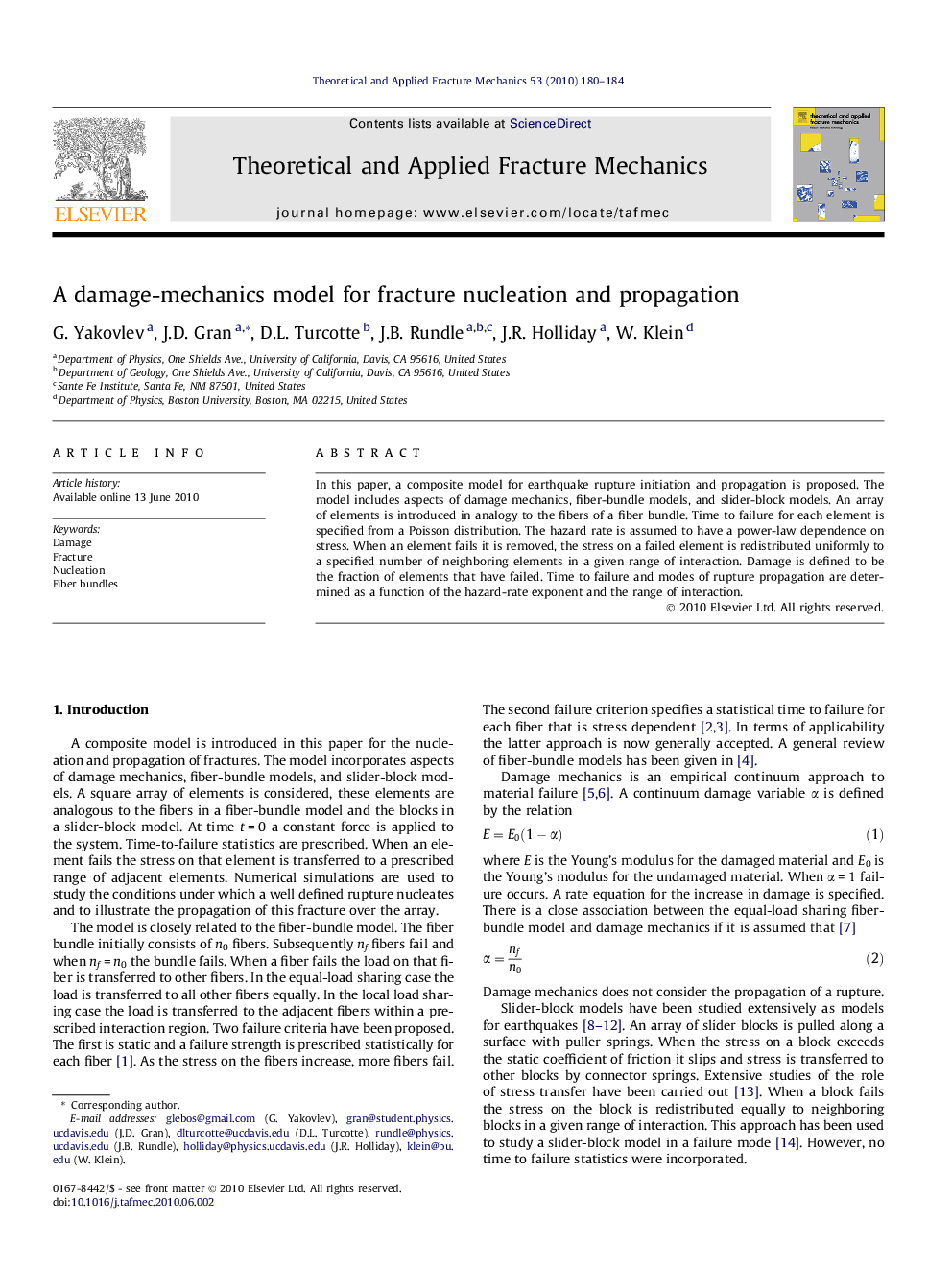| Article ID | Journal | Published Year | Pages | File Type |
|---|---|---|---|---|
| 804922 | Theoretical and Applied Fracture Mechanics | 2010 | 5 Pages |
In this paper, a composite model for earthquake rupture initiation and propagation is proposed. The model includes aspects of damage mechanics, fiber-bundle models, and slider-block models. An array of elements is introduced in analogy to the fibers of a fiber bundle. Time to failure for each element is specified from a Poisson distribution. The hazard rate is assumed to have a power-law dependence on stress. When an element fails it is removed, the stress on a failed element is redistributed uniformly to a specified number of neighboring elements in a given range of interaction. Damage is defined to be the fraction of elements that have failed. Time to failure and modes of rupture propagation are determined as a function of the hazard-rate exponent and the range of interaction.
